Categories
Subjects
Authors
Artists
Venues
Locations
Calendar
Filter
Done
June 14, 2021 – Review
“Portals”
Ben Eastham
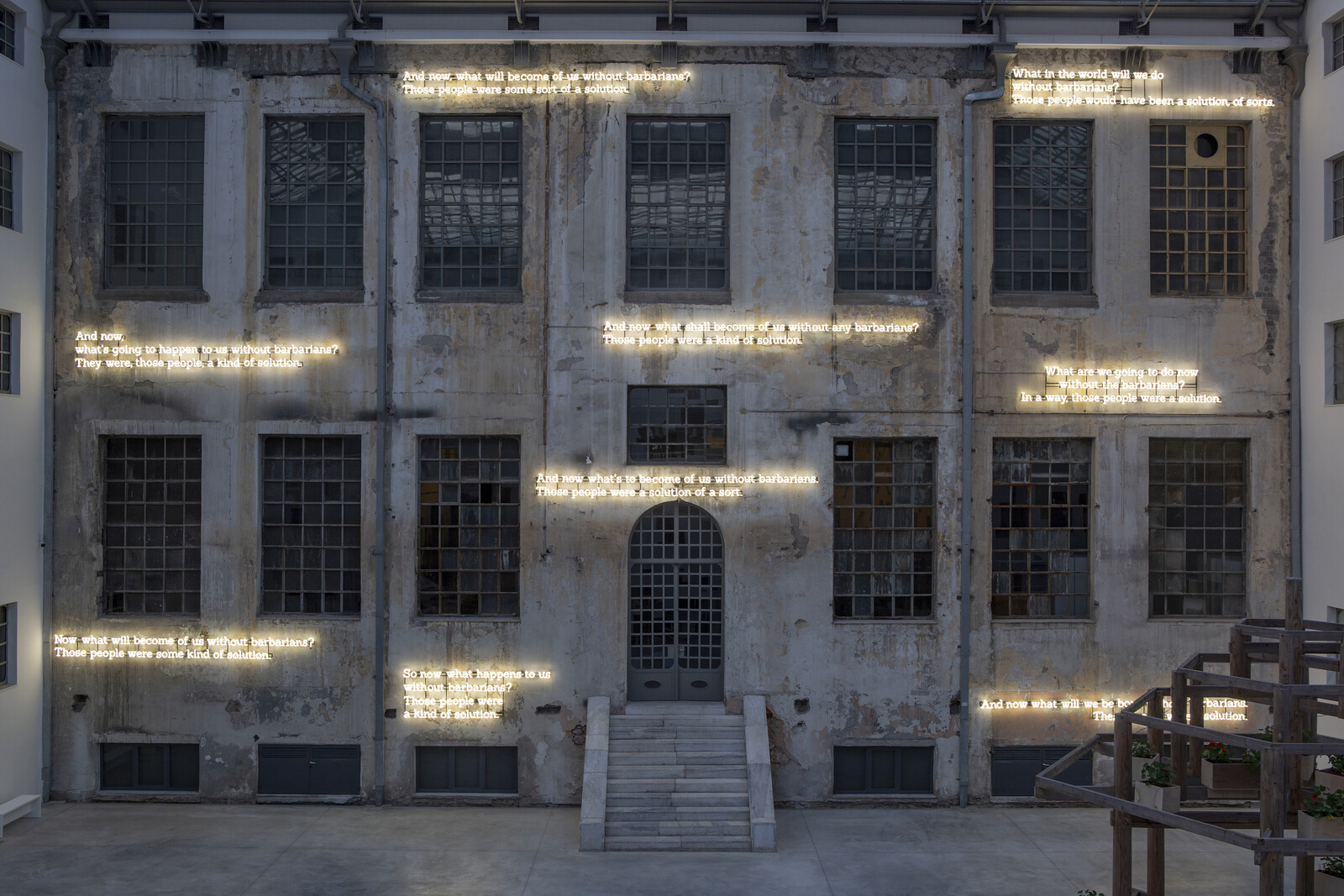
The editors of this publication keep a list of words and phrases that writers are to be strongly discouraged from using. On it are examples of curatorial bluster and authorial overreach (“In these times”), individually blameless words against which one editor maintains a personal vendetta (“oeuvre”), and a selection of quotes from canonical literature that have, by adoption into the catchphrase kitty of contemporary art, been entirely separated from their original meaning. So imagine my feeling when I discovered one of those blacklisted lines—Samuel Beckett’s “Fail again […] fail better”—mounted in giant steel letters outlined by LED lights on the façade of Athens’ new cultural center.
In fairness to Nikos Navridis, the artist responsible for transforming Beckett’s meditation on the void into a city-scale motivational mantra, his piece illustrates how a work of art can be interpreted in ways contradictory to its maker’s intentions. The artist is entitled to construe the line as he chooses, or it might even be that he wants local residents to reflect on the purposelessness of existence when buying oranges at the neighborhood market over which his sign looms. Either way, this reminder of art’s tendency to slip the leash of simple meaning offers a …
October 27, 2020 – Review
Chto Delat’s “When the roots start to move and get lost”
Ben Eastham
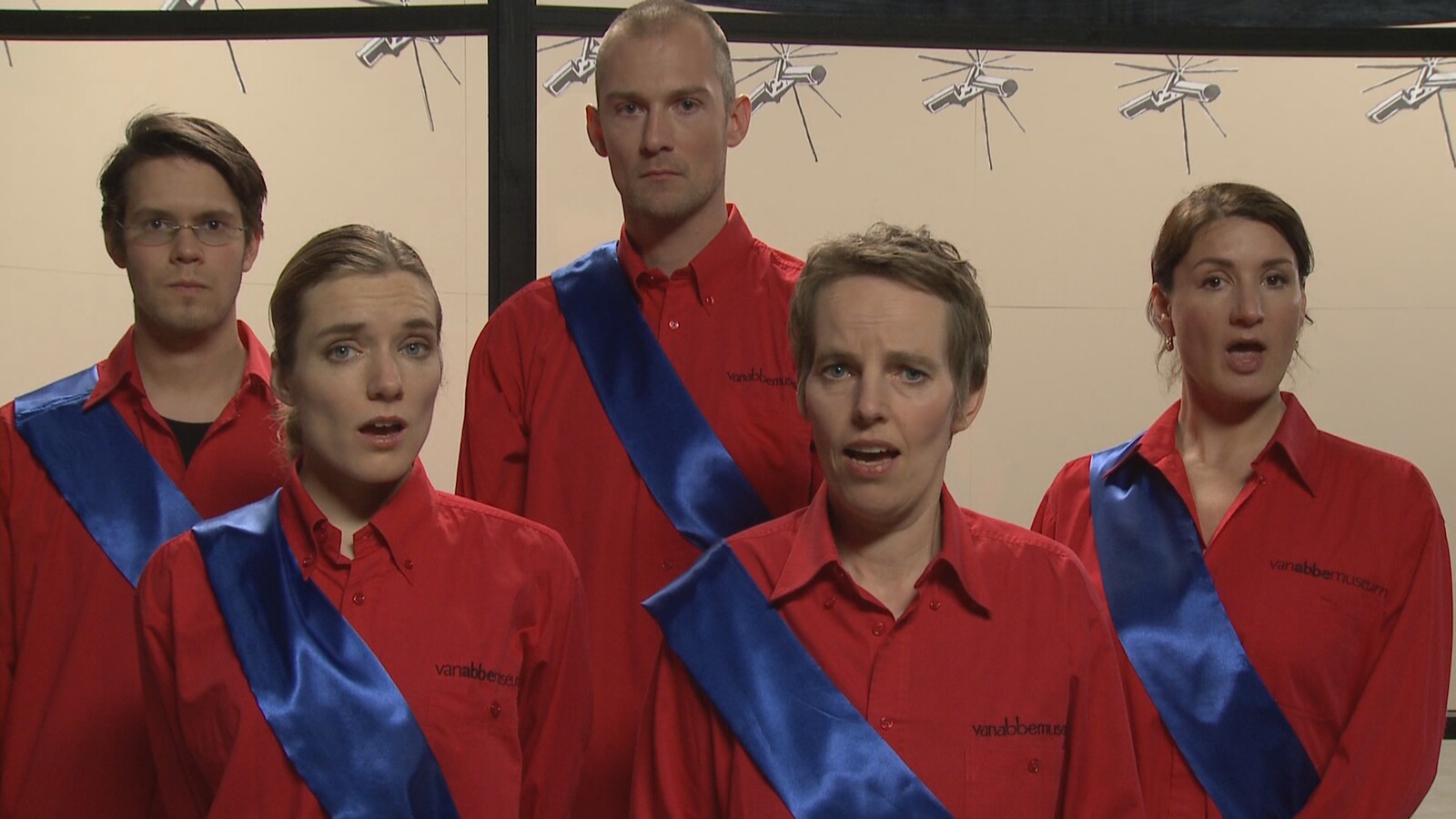
A screen at the entrance to Chto Delat’s first solo exhibition in Athens shows four members of the Russian collective on a Zoom call. Each of them sways, swoons, or sighs along to Maya Kristalinskaya’s interpretation of the 1965 torch song Nezhnost’ [Tenderness] as overlaid script tells the group’s history since its formation in 2003. A wall text states that the ballad was a favorite of Yuri Gagarin, the first man ever to be estranged from the planet, and that this performance was recorded during lockdown. As Kalinskaya mourns an earth left empty by separation from her lover, this short portrait of divided friends introduces the themes of the show: how to resist isolation, what it means to belong, and how to be together.
Chto Delat’s interest in these issues predates the pandemic and political crises which have exacerbated them. Filmed in 2011, and exhibited here in a basement screening room, Museum Songspiel: The Netherlands 20xx presents a hypothetical scenario in a near-future that may, a decade ago, have seemed dystopian: a group of asylum seekers have escaped deportation and taken refuge in a modern art museum. A resident artist has the bright idea of dressing them up as performers in …
February 1, 2019 – Review
Christina Dimitriadis’s “Island Hoping”
Kimberly Bradley
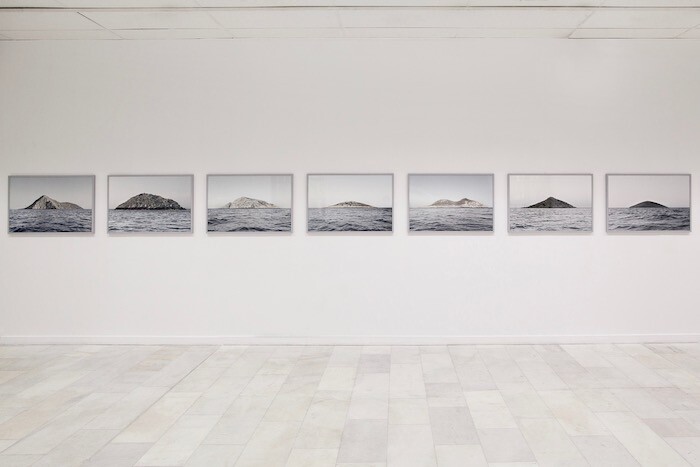
Long ago, before the euro and the internet, I was a young backpacker on my first trip to Greece. Beaches were broad and unpeopled. I traveled on boats to islands large and small, always noticing the tiniest ones jutting from the Aegean like beacons or sculptures. In the midst of youthful island-hopping, the romance of the Aegean and the Mediterranean—their mythologies and histories—caught me.
German-Greek artist Christina Dimitriadis—whom I met years later and whose art and life has taught me much about what one could call the contemporary Greek condition—takes the act of moving between isles as the most direct point of departure for her photography exhibition “Island Hoping,” curated by art historian Denys Zacharopoulos. The notion is embedded in the punny title (I’ll get to the “hoping” part in a moment). But like any of Greece’s 6,000-odd islands, this show possesses multiple layers and approaches.
Along the far wall of the white, windowless exhibition space are 30 photographs (all 60 by 90 centimeters and collectively titled “Island Hoping”). Each depicts an island or group of islands too small for human habitation rising from the sea, centered in the frame. The images share a horizon line where water meets sky, just below …
December 7, 2018 – Review
6th Athens Biennale, “ANTI”
Kimberly Bradley
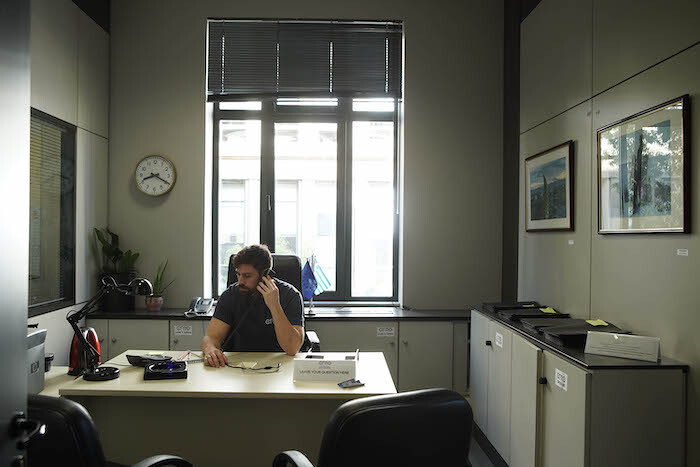
It was strange to visit the sixth edition of the Athens Biennale weeks after its kick-off and at times nearly alone. Writers covering megaexhibitions usually move in herds, but this time there was no press conference to provide me with pithy quotes to explain the title, “ANTI,” and no on-site, real-time assessments from fellow critics. I ran into a Greek artist I know shortly after arriving. Later I saw the artist Poka-Yio—a founding director of the first Athens Biennale, “Destroy Athens,” in 2007, and a member of the current edition’s curatorial team, alongside Stefanie Hessler and Kostis Stafylakis—giving a tour. But for the most part it was just me and the work of the biennale’s 100 artists.
This solitary contemplation turned out to be a perfect way to take in this extensive show, which in part functions as a statement on the herd behavior to which the various publics it addresses often succumb. A major thread in “ANTI” is the normalization, appropriation, and capitalization of what society not so long ago considered nonconformist, disruptive, or antiestablishment. The majority of works on view resist quick judgment. They are multilayered, complicated.
This complexity, however, isn’t immediately obvious. “ANTI” opens to a familiar sight: …
July 9, 2012 – Review
Angelo Plessas’s ”Temple of Truth”
Marina Fokidis

Communication is the quest, communication sans barriers. Angelo Plessas’s works form a certain kind of a deliberate “digitally naive” poetry, like a weed within the over-wrought special-effects garden of cyber space. His works are connected with the internet through organic and natural processes—but it’s not that he’s fascinated with technology as such. Most of his works exist as web pages that are projected in the white box environment (on occasion) or on public walls within the city. The domain names of these websites are as much a part of the work as is the content. People can interact with them through their computer, from the couch or wherever they happen to be. Yet, this facility of interaction is not used by the artist as a gimmick. The fact that the works are also to be seen online is just a casual incident. Plessas seems to be a veritable bohemian, rather, who oscillates between fertile constellations and specific locales within the net, no different than a bohemian flâneur, drifting through the streets of Paris. He is a part of a kind of “celebrity neighborhood” where members create freely and dwell in and out of the internet without having to undergo any …
October 27, 2011 – Review
Alex Hubbard’s "The Basement of Alamo"
Marina Fokidis
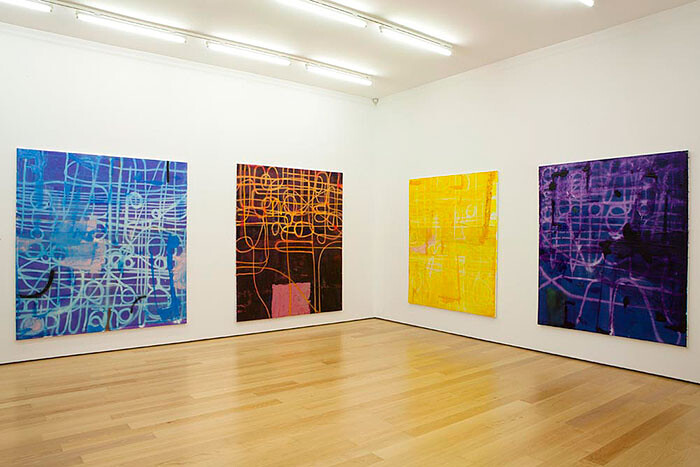
In “The Basement of Alamo,” Alex Hubbard transforms the Eleni Koroneou gallery into a laboratory of zymosis. For his first solo exhibition in Athens, the artist has presented a new series of seven paintings, all made in 2011, which rely on a dynamic juxtaposition of different materials and applications. Employing acrylic, resin, and fiberglass, the paintings heed to a dramatic clashing of form and color that results in a radical polyphony. Part-print, part-painting, these images become part of a nameless genre: although bearing traits of abstract expressionism, the aesthetic of any “accepted” visual art trend is clearly nullified. Fluid forms merge together in a choreography of the senses. A gestural painterly drip is posited in contrast to the flatness of the printing process, alluding to a certain kind of emotional indecisiveness between the accepted and the unexpected, the solid and the instinctual.
Arthur Danto describes modernist art as an art defined by taste and made essentially for people with taste, while he discusses the end of modernism as the exodus from the tyranny of taste and the welcoming of the anti-formal and the anti-aesthetic. And this seems, in a way, quiet true. Yet Abstract Expressionism—as other exemplary movements—was more discussed as …